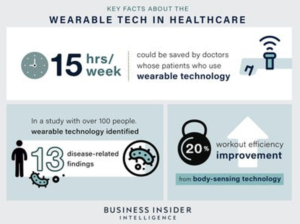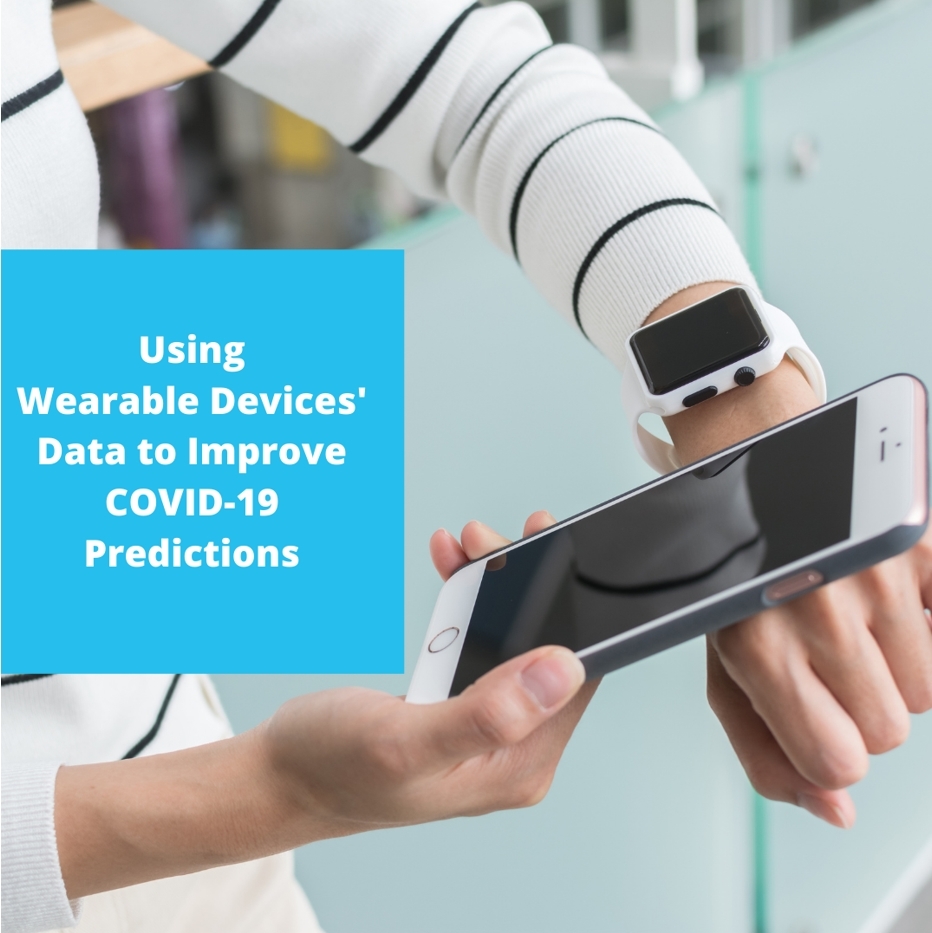The usage of fitness smartwatches such as Fitbits and other wearable technology is considered fairly mainstream across the healthcare sector. The future of wearable devices looks bright and optimistic. In the last four years, the use of wearable technology has more than tripled, driven by the soaring demand of consumers to monitor their fitness and health. More than 80% of consumers are willing to wear fitness technology as per research from Business Insider Intelligence, which has led to a boom in the market for wearables.

Business Insider Intelligence
The ongoing COVID-19 pandemic has made us focus sharply on the need to channel and utilize digital infrastructure to its fullest potential for remote patient monitoring (RPM). Devices like Fitbit and other wearables aid in detection of diseases and monitoring of individual’s health as current viral tests and vaccines are still under development. Predicting the prevalence of COVID-19 remains a necessity through the translation of such technology.
Studies Utilizing Wearable Data
- The DETECT study
The prospective app-based research platform (Digital Engagement and Tracking for Early Control and Treatment), headed by Scripps Research Translational Institute, has revealed data from 30,529 health wearable owners. This data collected from health and fitness wearables can be incorporated to improve symptom-based COVID-19 screening. In this study, from the 30,529 device owners that were enrolled, 62 percent were females, and 12.8 percent were ages 65 and above. 12.5 percent of the females reported at least one COVID-19 symptom, while symptomatic participants who reported positive COVID-19 test results were 54, and participants who reported negative results were 279.
As per the researchers, stark differences were found in participants who tested positive and negative after observing wearable sensor data. The sleep, activity metrics differed considerably in cases that were positive and negative. Furthermore, resting heart rates of 30.3% detected positive cases were more significant than two standard deviations. However, researchers also noted that these findings were not statistically credible to discriminate between cases independently.
Through the study’s website and collaborations with partners such as Fitbit, Walgreens, and CVS/Aetna, adults living in the U.S. were enrolled between March 25 and June 7 of this year. The device data, symptoms, COVID-19 diagnostic test results of participants who had registered by downloading the study app and consented to share some information in the Electronic Health Record (EHR) were collected.
- Symptom Study App
In this study, the researchers’ work focuses on the COVID Symptom Study app, a tool employed for residents of the U.K and the U.S. earlier this year. Data from the project published in May yielded a symptom-based prediction model and highlighted a link between specific self-reported symptoms and positive cases.
- TemPredict Study
Furthermore, UC San Francisco’s TemPredict Study uses Oura Rings, sleep and activity tracker, and surveys of participants to recognize patterns that could help predict the commencement, development, and recovery of future COVID-19 cases.
- G24 Healthcare Study
Moreover, the Abu Dhabi technology company G42 Healthcare is currently leading the world’s first Phase III vaccine trials. Individuals are willing to volunteer from Bahrain and Abu Dhabi using health wearables to monitor their study populations’ health and fitness for the company’s COVID-19 vaccine trials.
- Fitbit Study
Fitbit has also recently launched an in-app study to attempt to launch a prediction algorithm, an approach to recognizing symptomatic and pre-symptomatic individuals. The U.S. Department of Defense, through the U.S. Army Medical Research and Development Command, has disbursed nearly $2.5 million to Fitbit to proliferate its work in developing an algorithm for fitness wearables to detect the onset of symptoms of COVID-19 before they can emerge.
Looking forward:
Currently, with the lack of reliability and pace with COVID-19 testing, to prevent the transmission of SARS- CoV-2, contact tracing, identification, and isolation of each individual to reduce the spread of the virus to vulnerable individuals is very challenging and demanding. Many states across the U.S. have begun to implement measures to re-open schools, businesses, and other activities with Standard Operating Procedures (SOPs) and rely on screening practices which usually entail measuring one’s temperatures and travel-related questions. This approach can overlook and exclude pre-symptomatic or asymptomatic cases, comprising 40 to 45 percent of those infected with SARS-CoV-2, who can still be infected.
In the U.S. 23.3 percent people use wearable devices as a fitness tracker to monitor their resting heart rate, sleep, and activity that can also be used to ascertain subtle differences in data that may shows signs they have a viral infection. Sensights.AI is a comprehensive remote patient monitoring platform that can seamlessly connect with any wearable and can collect data and track data in a concise manner, allowing for more detailed and accurate health monitoring and early symptom detection for viral infections like Covid-19 found in older adults and medical staff.

